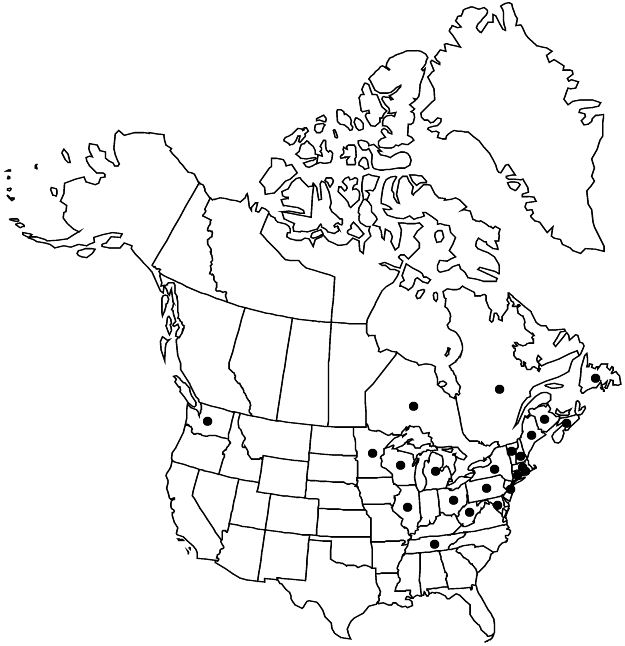Hypericum ellipticum
Fl. Bor.-Amer. 1: 110. 1831.
Herbs, perennial, erect, with creeping, rhizomatous, ± woody base, usually unbranched, sometimes branched proximally, relatively slender, 1.1–3(–5) dm. Stems: internodes 4-lined. Leaf blades broadly to narrowly elliptic or oblanceolate to oblong-elliptic, 11–35 × 3–13 mm, base not articulated, cuneate to shallowly cordate-amplexicaul, margins plane to subrevolute, apex rounded, midrib with 5–7 pairs of branches. Inflorescences corymbiform, (1–)3–15-flowered, narrowly branched, sometimes with branches from 1–2 proximal nodes. Flowers 12–15 mm diam.; sepals persistent, not enclosing capsule, (4–)5, ± lanceolate to lanceolate-elliptic, ± unequal, 6–7 × 2–3 mm; petals (4–)5, pale yellow, sometimes tinged red, obovate to oblanceolate, 6–8 mm; stamens persistent, 70–95; ovary 3-merous, placentation parietal. Capsules ellipsoid to globose, 4–7 × 3.5–5 mm. Seeds carinate, 0.6–0.7 mm; testa scalariform-reticulate. 2n = 16, 18.
Phenology: Flowering summer (Jun–Sep).
Habitat: Stream, lake, and pond margins, wet meadows, swamps
Elevation: 0–600 m
Distribution

N.B., Nfld. and Labr. (Nfld.), N.S., Ont., Que., Conn., Ill., Maine, Md., Mass., Mich., Minn., N.H., N.J., N.Y., Ohio., Pa., R.I., Tenn., Vt., Wash., W.Va., Wis.
Discussion
Hypericum ellipticum is related to H. sphaerocarpum, differing by the shorter, herbaceous, rhizomatous habit, shorter leaves, and smaller seeds. A submerged aquatic form (forma submersum Fassett) and one with axillary branches developing after fertilization (forma foliosum Marie-Victorin) seem scarcely worth formal recognition. Hypericum ellipticum is introduced in Washington.
Selected References
None.